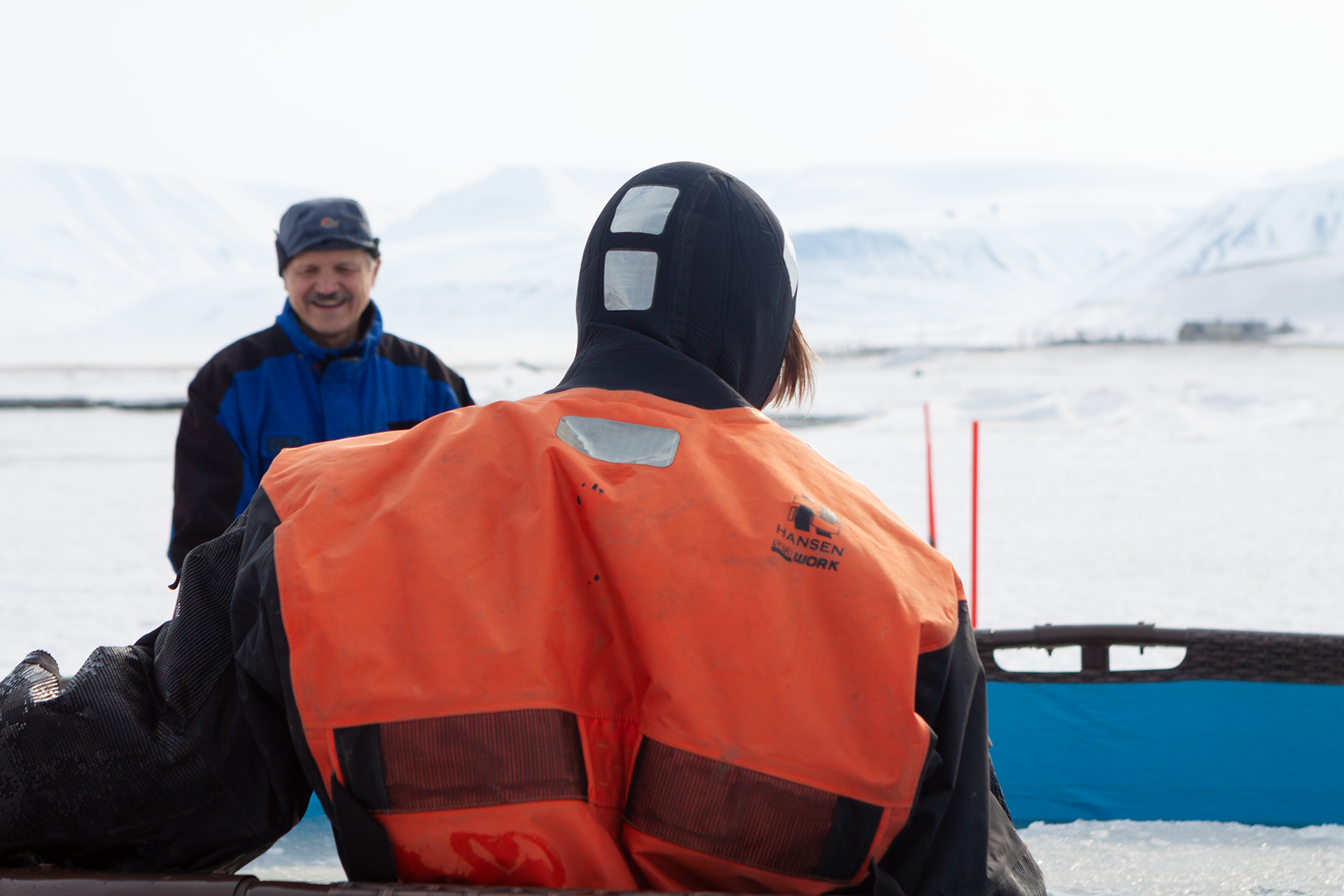Pool of science
It was neither a new tourist venture nor the jacuzzi of MS Nordstjernen that drifted on shore. The pool on the ice below SSU was a student project in Arctic technology led by Prof. Alexey Marchenko.

Prof. Marchenko took inspiration from similar research in Antarctica. They were going to transport installations to the stations by plane and needed to know the load capacity and bearing capacity over time. Dr. Devinder Singh Sodhi, CRREL, participated in the Antarctica experiments, was teaching at AT courses and has participated in the field works since 2013.
Marchenko has worked for years to do the same in Svalbard, and a few years back, he started on a smaller scale with a belt wagon on lake ice nearby Breinosa and on sea ice in Vallunden lagoon in Svea. The purpose was to observe ice deformations and stresses over long term loading when the load is not enough to breakup ice in a short time.

Granular content, salinity, temperature, precipitation, currents, and fractures in the ice are some factors to consider regarding bearing capacity.
Findings from the project on cycling loading of ice performed in the group of Prof. Erland Schulson, Dartmouth College, with laboratory made ice showed that the flexural strength increased linearly with stress amplitude, meaning the ice is more substantial after a stress impact. Similar experiments performed at UNIS with natural lake ice confirmed the result.
This year, Marchenko and his students started with another laboratory experiment with beams of natural lake ice and sea ice to investigate how viscous properties of ice change after long term loading.
In addition, the full-scale test was organized with a 20-tonne basin in the mouth of Adventfjorden to measure how the sea ice is affected by constant weight over several days. More accurately, they want to determine how strong it is and how the weight changes the ice physics. The data is valuable for research and the marine industry, tourist industry, and everyone else conducting fieldwork on ice.
Measurements were performed with IMU and geophones sensors designed at UiO, Met.no and the University of Melbourne. The cooperation was supported by Svalbard Strategic Grant – A method to identify sea-ice breakup: a pilot study.


What we know so far:
The pool was removed Wednesday, 26 April, and the preliminary findings show that cracks formed early around the tub. A day later, a circumferential crack and four radial cracks formed towards the center. A week later, they can count eight radial cracks, in addition to the fact that the pool has sunk into the ice.
Measurements show that the ice is between 53-69 cm deep, and at low tide, the ice reaches the ground. When the sea rises again, the cracks will close while water pushes through the cracking.
In addition to the pool project, we regularly work with drilling samples from sea ice and freshwater ice, and at Unis, we have our cold lab with a pressure apparatus for experiments. One can measure much of the same, but monitoring out in the field is entirely different.
After collecting information, analyzing the data set provides in-depth knowledge of how the sea ice will be affected by transport in the future. The more we know about the composition and characteristics of the sea ice, the easier we can predict the ice behavior in advance.








